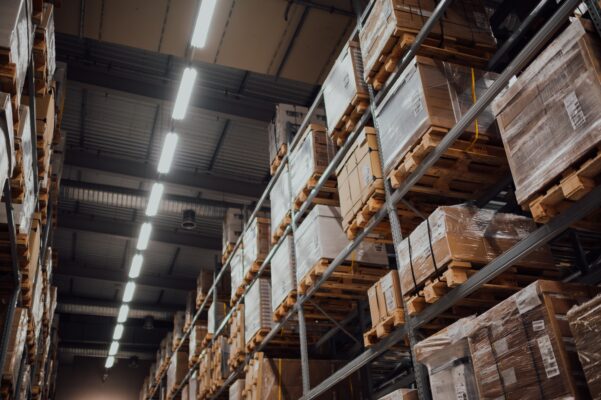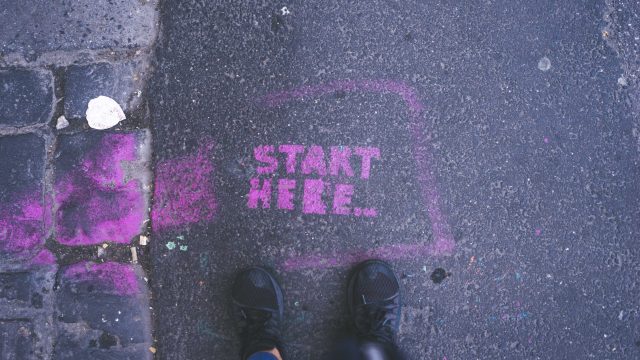Returns are a fact of life, not just when selling on Amazon but when selling anywhere online or offline. Roughly 15% of all items purchased on Amazon are returned. Amazon is very buyer-centric and will generally allow customers to return items for any reason. This works against you as someone trying to do online arbitrage on Amazon, but it does mean that Amazon is a very attractive place for buyers as they know in the event of a problem, they’ll be looked after.

However, when doing FBM, you are able to charge restocking fees to customers who want to return items in some circumstances. In this article we’re going to go through exactly when and in what situations you’re allowed to charge restocking fees to your customers to discourage frivolous returns.
When can I charge restocking fees?
It’s important to establish this from the get-go – if you’re using FBA, you won’t get the option to charge a restocking fee. You can only do this if you’re using FBM. This is because the FBA return policy is largely automated and there are certain actions Amazon will take without you being involved. We go into what these are exactly in the next section – but if you’re doing FBA, you won’t be given the option to charge a restocking fee.
You can’t always charge a restocking fee even on FBM items – for example, if the customer received the incorrect item due to a shipping error, or if the item arrived damaged and it was the carrier’s fault.
You’re allowed to charge restocking fees in the following cases:
- If the buyer changes their mind outside of the return window – you can charge up to 20% of the item’s price
- If the buyer changes their mind within the return window, but the item arrives back to you damaged or materially different to what you sent the buyer – you can charge up to 50% of the item’s price
- The buyer returns media such as a DVD or a vinyl record that has been opened or the plastic wrap has been removed – you can charge a 50% restocking fee
- The buyer changes their mind at any point and returns a video game or software that has been opened – you can charge a 50% restocking fee
- The buyer returns an item with obvious signs of use – you can charge a 50% restocking fee
In any other circumstance, you won’t be able to charge a restocking fee. This includes if the buyer receives a used item, or if the buyer changes their mind within the return window.
FBA returns and fees explained
Amazon will allow customers to return items within 30 days of purchase for any reason, provided the item is in saleable, original condition. Any item returned within this 30 day period will not incur a restocking fee, unless it is damaged, at which point the seller has the option to charge a restocking fee or not. Some items have a longer return period, such as baby gifts which have a 90 day return period instead of 30 days.
Let’s look at a couple of situations where customers return items and fees may or may not be charged.
Return initiated but the customer does not actually return the item
Amazon usually refunds the buyer upfront. If the item isn’t returned within a set period (usually 30 days) then Amazon charges the buyer again for the full cost of the item. Effectively, you are made good as if the return never happened.
Return initiated, item is returned and is in resellable condition
Amazon will inspect the item and determine its condition. If Amazon deems the item to be in resellable condition, they will return it to your inventory. The revenue for the item will be deducted from your account, and you won’t be refunded any of the FBA fees.
Item is returned and is not in resellable condition
If the item is returned and determined to not be in resellable condition, one of several things may happen.
If it’s Amazon’s fault
If something happened during the fulfilment process and Amazon deems themselves to be at fault, they will provide the buyer with a full refund and will refund you the cost of the product including the FBA fees.
If it’s your fault or the customer’s fault
This is where it gets a little frustrating for sellers. If the item is not in resellable condition because of a quality control issue or a manufacturing defect, or even if the customer damaged it themselves, the buyer will be refunded the full cost of the item and you will not receive reimbursement for any of the FBA fees.
Amazon will then place the item in your unfulfillable inventory. You’re then given the option to either have Amazon dispose of the item, or have it shipped back to you so you can inspect it. Both these options are chargeable, and Amazon will show you what it expects to charge you for either of these services should you wish to use them.
Order Defect Rate
Amazon tracks your performance based on several different metrics, and one of them is order defect rate (ODR). This applies whether you are doing FBA or FBM. ODR effectively measures your ability to provide a good customer experience, and includes metrics such as your negative feedback rate and your credit card chargeback rate.
An ODR over 1% can cause your account to be suspended, as it’s Amazon’s policy that sellers maintain an ODR lower than 1%. Amazon also tracks your return rate ratio, and if this gets too high, Amazon can suspend your listing and you will be required to submit a plan of action to Amazon on how you will rectify these issues before being allowed to sell again.
How do I prevent returns on Amazon?
Put simply, you can’t prevent returns. Returns are a part of doing business and you’re guaranteed to experience returns when doing Amazon arbitrage. The trick is to know how to handle them, and to consider the cost of returns as simply the cost of doing business on Amazon. However, you can do a few things to lower the chance of receiving returns, which effectively boils down to ensuring your description is accurate, providing excellent quality images or videos of the item and asking for customer feedback.
To some extent, and especially after holidays such as Black Friday and Christmas, you are just going to have to put up with the fact that some of your customers will want to return items and there’s nothing you can do about it.
Frequently asked questions about Amazon restocking fees
Can I charge restocking fees when doing FBA?
When using FBA, you effectively give Amazon complete control of your inventory, and this includes what to do with returned items. As such, you won’t be given the option to charge a restocking fee if an FBA item is returned, as Amazon will determine what to do with it and either charge you or the customer accordingly.
Are restocking fees legal?
Restocking fees are perfectly legal, but they must be posted somewhere customers can see them. Amazon publishes potential restocking fees on their site, so you are well within your legal right to be charging your customers a restocking fee in the right circumstances.
Can a buyer be charged a restocking fee within the return window?
Items returned in original condition within the return window won’t be charged a restocking fee. There are circumstances where a restocking fee can be charged within the return window, such as if the item has been opened or shows clear signs of use, but generally customers are free to return items within 30 days for a refund and won’t be charged a restocking fee.
Do I legally have to accept returns?
The US does not have federal laws affecting returns and refunds, and customers don’t have an automatic legal right to a refund if they change their mind. However, this is irrelevant – Amazon forces you to offer a return policy and if you try to circumvent this you will find your account suspended. In the case of FBA, you have no influence in the matter, because Amazon will decide whether or not to refund the buyer in the event of a return.
In conclusion
As we’ve mentioned, returns and restocking fees are a part of doing business on Amazon. Whether you’re on FBA or FBM, you need to have a process in place to deal with returns and understand that no matter how hard you try, you won’t be able get away from them.
What you will be able to get away from, however, is manually sourcing products for your online arbitrage business. This is where SourceMogul comes in. SourceMogul scans thousands of retailers for millions of products to find you the most profitable potential arbitrage opportunities. We also offer a 7 day free trial, which you can check out at the link below.
More strategy
-

6 steps to becoming an Amazon seller. No experience needed.
Becoming a successful Amazon seller is easy - the Amazon brand and logo represents…
-

Top tips for success from a new Amazon seller
We've compiled a list of the top tips for new sellers, gathered from a…
-

How to get ungated on Amazon – your guide to Amazon restricted categories
If you’re looking to expand your online arbitrage business, you might find yourself tempted…
-

How to prepare for Amazon Q4 trading
Every year the holiday season seems to come around a little earlier. As an…




